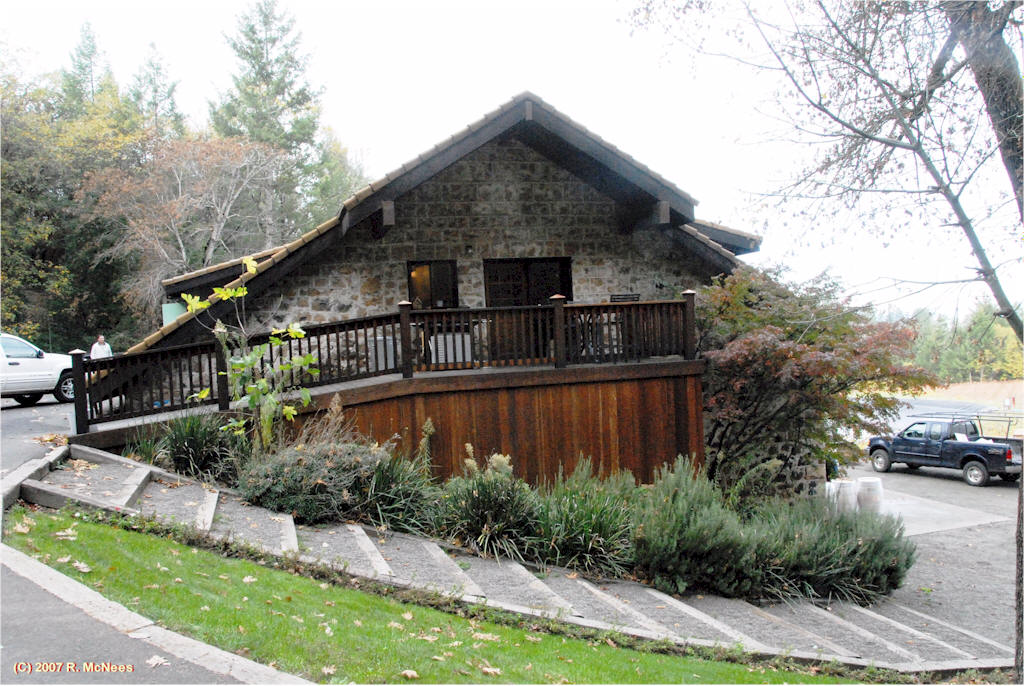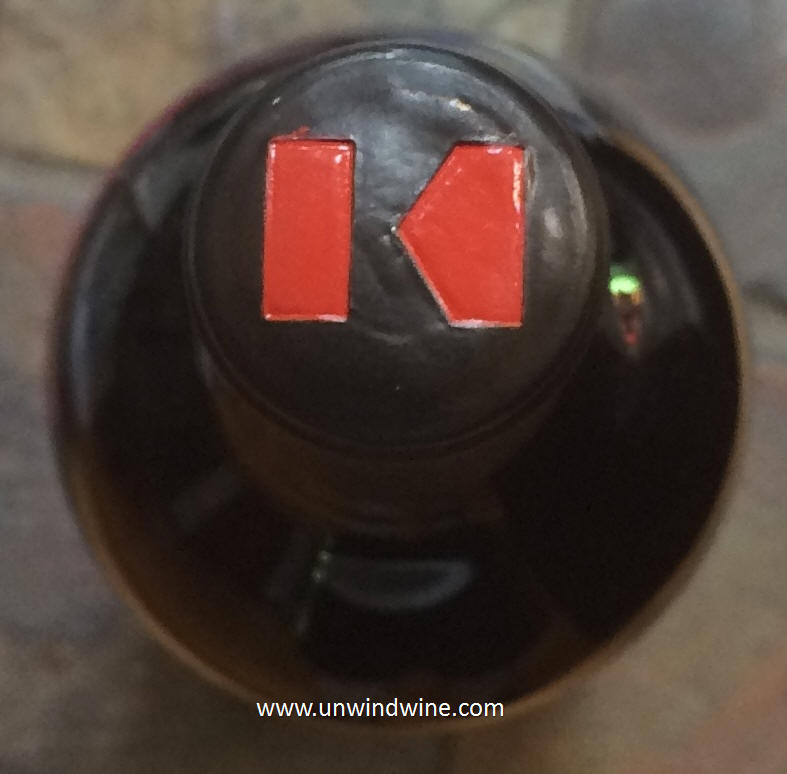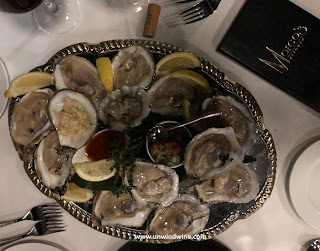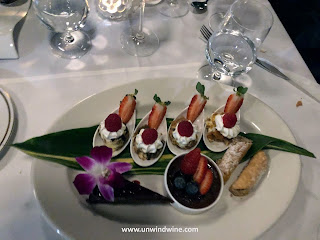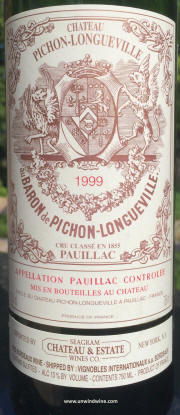Team Dinner Features Mini Horizontal of 2013 Tucsan Brunello di Montalcino at Italian Village Chicago
Due to pandemic concerns and restrictions we significantly downsized our global team meeting scheduled for this week in Chicago. For the dramatically reduced, remaining set of the attendees, who were not involved in other activities this evening, we held an extended team dinner at our usual go-to venue, Italian Village, Chicago.
Besides the team-building, fellowship and business interaction, one of the fun and entertaining aspects of hosting a small group dinner is the ability to serve and taste a variety of wines for comparison tasting. This was part of a continuum of numerous dinners which I've featured in earlier blogposts about our wine and dinners at Italian Village, Chicago's oldest, longest running continuously family operated Italian restaurant. Taking advantage of and exploiting the extraordinary, extensive wine list and wine cellar of Italian Village, curated and managed under the direction of dear friend Jared Gelband, Wine Director, I selected a flight of wines. I selected from the vast cellar winelist a horizontal flight (wines of the same vintage), four 2013 vintage Brunello di Montalcino labels. In the end, three of the four labels we selected were available in stock in the cellar which we consumed. (The other label selection that was not available was Molino di Sant'Antimo Brunello di Montalcino 2013.)
The vast Italian Village cellar and winelist several pages of Brunello di Montalcino labels across vintages spanning more two decades.
Brunello di Montalcino is the DOCG specified Italian wine classification, the highest in the rank order of the four levels. The Denominazione di Origine Controllata e Garantita (DOCG) designation classification was established in 1980. It is one of Italy's best-known and most expensive wines.
Brunello is the local name for Sangiovese grape varietal based wines, used since 1865, when a
producer in the village of Montalcino made Italy's first 100% Sangiovese wine.
The name Brunello is derived from a grape varietal of the same name that over time became apparent it is the same grape as the popular varietal, Sangiovese. The Brunello di Montalcino DOCG is conferred on highest quality red wines produced in the vineyards surrounding the town of Montalcino, in the province of Siena. The region is located about 80 km south of Florence in the Tuscany wine
region.
There are about 250 wineries in the region, mostly smaller estates with vineyards of about 50 acres, with a combined total of about 8500 acres of vines. Most are located in the western part of the region, the area most influenced by the climatic effects of the nearby Mediterranean sea. Several of the top producers and a regional map are shown above.
Brunellos based on the Sangiovese grape with its thicker-skinned berries tend to produce wines with exceptionally bold fruit flavors, high tannin, and high acidity that extend the life of the wine. Hence, they tend to be rather long lived wines, reaching their peak perfection after a decade or more. Taking advantage of the deep and broad selection available on the Italian Village cellar winelist, I selected a flight of nine year old Brunello di Montalcino DOCG classified wines to accompany our Italian cuisine, and to compare different labels from the same vintage.
Fanti Brunello di Montalcino 2013
The Tenuta Fanti estate
has belonged to the Fanti family since the beginning of the eighteen
hundreds, managed under the direction of Filippo Fanti since
the early 1970s, joined by his daughter Elisa in 2007. The winemaker is Fillipo Artini.
The Fanti Estate
is located in the heart of Tuscany, in the valley of
Castelnuovo dell’Abate which lies to the south of the village of Montalcino. The estate spans 750 acres of land with eighteen different vineyards spanning 135 acres, several surrounding the new wine cellar built in 2004.

When Filippo Fanti took over leadership of the company in the early 1970's, he focused on striving for the highest quality wines that would express the terroir of Castelnuovo dell' Abate. Starting with the soils, he sustainably replanted the vineyards and olive trees after a careful selection of the most suitable plots within the estate. In 2004, construction began on a new modernized spacious gravity flow cellar for winemaking, ageing, and refinement.
The Fanti Estate vineyards are planted mostly to Sangiovese but also include the Tuscan Bordeaux varietals Cabernet Sauvignon and Merot, some Syrah and white wine grapes Viognier and lesser known grapes Trebbiano, Malvasia and San Colombano. There are also 150 acres of olive trees, 200 acres of seed crops and the remaining land in forest.
Fanti produce a portfolio of nine different wines plus a grappa dessert wine, primarily Sangiovese based including this Brunello, as well as several Tuscans consisting of the Bordeaux varietals and the Syrah, and a couple white wines from estate grown Viognier
The first vintage of Fanti Brunello di Montalcino was released back in 1980, selected from twenty-five acres of Sangiovese grapes located on the different slopes of the Castelnuovo dell'Abate area.
This 2013 vintage release was awarded 93 points by James Suckling, 92 points by Vinous A. Galloni, and 90
points by Wine Advocate Robert Parker, Wine Spectator and Wine Enthusiast.
The producer's tasting notes for this release: "Color: bright ruby red, medium intensity. Nose: complex notes of cherry, red fruits and violet, alongside with pepper, licorice and cinnamon. Fresh balsamic note. Palate: tannins are dense and well integrated, great acidity, elegant, vertical and slightly sapid. Well balanced. The retro nasal recalls perfectly the nose."
This was bright ruby colored, medium bodied, black cherry and red berry fruits with notes of floral, a bit of sweetnesss with spicy cinnamon, licorice and hints of white pepper with soft tannins on a crisp clean tangy finish.
RM 91 points.
https://www.cellartracker.com/wine.asp?iWine=2204555 https://www.tenutafanti.it/en/home/
Castiglion del Bosco Brunello di Montalcino 2013
This renowned premium label is owned by the famous fashion designer Massimo Ferragamo, and Chiara Ferragamo, who purchased the historic property of nearly 5,000-acres, formerly a medieval
village, in 2003. They set upon enhancing and modernizing the facilities, renovating the historic Borgo and villas, and updating the winery and cellars.
The history of Castiglion del Bosco dates back to the 1100's and great Sienese families who settled the area. The estate was farmed over the ensuing 800 years.
The historic castle was erected in 1100 in classic medieval style. At the dawn
of the thirteenth century, the Cacciaconti family of Trequanda had
stone walls built around the stronghold that stands on the hilltop,
still visible today with the stone tower.
In 1318, Sienese Ciampolo Gallerani declared himself lord of the
fortress. He claimed that one of his descendants, Cecilia Gallerani, was
the girl depicted by Leonardo da Vinci in his famous painting “Lady
with an Ermine” (1488). On his death, in 1338, Castiglion del Bosco fell
under the rule of the Piccolomini family, who initiated widespread
renovation of the fortifications.
Castiglion del Bosco is one of Montalcino's most isolated
vineyards with its 150 acres of vines surrounded by nearly 3000 acres of woodlands. The Castiglion del Bosco name is derived from the word bosco,(wood), surrounding the Castiglion (walled castle), 'fortress in the woods'. The estate retains the same historic boundaries with the famous Borgo, school, stables, and the crop fields, vineyards and olive groves. The rolling Val d'Orcia land has been the subject of landscape paintings for generations of Tuscan artists.
Castiglion del Bosco
was one of the founding members when Montalcino's wineries teamed up and created the region's official Consorzio del Brunello di Montalcino 1967. The Brunello di Montalcino
Wine Consortium was one of the earliest Italian wine producing regions to earn Denominazione
di Origine Controllata (DOC) and Denominazione di Origine Controllata e
Garantita (DOCG) status. From the originial 25 founding members producing about 850,000 bottles annually, today’s production
now exceeds 6,000,000 bottles from the consortium membership that has grown to 140
wineries.
In 2010, the Castiglion del Bosco Golf Club was developed, the only private golf club in Italy, a stunning 18-hole course designed by Tom Weiskopf is sited near the world-class winery and a five-star resort set on nearly
520 acres.
The vast parkland that surrounds the Castiglion del Bosco estate contains the Art, Nature and Culture Park of Val d’Orcia, established in 1967 as a
Protected Natural Area. Castiglion del Bosco Val d’Orcia was recognized as a UNESCO World Heritage site, acknowledged as a place of outstanding universal value.
In 2021 the 2016 vintage Castiglion del Bosco Brunello di Montalcino
was awarded 99 points by James Suckling and it came in second place in
his Top 100 Wines of Italy 2020, listed along with the best wines of any
Italian wine region and appellation.
The estate of Castiglion del Bosco grows primarily Sangiovese, and its line of wines is an expression of the two local denominations: three
different interpretations of Brunello and the Rosso di Montalcino.
Prima Pietra, the second vineyard property of Massimo Ferragamo lies in
Riparbella, on the Tuscan coast, with 27 acres of
Merlot, Cabernet Sauvignon, Cabernet Franc and Petit Verdot.
This was garnet colored, medium bodied, expressive black cherry and black raspberry fruits, notes of toast, leather, tobacco, spice and hints of pepper with a nice balance of acidity and tannins on the long engaging finish.
RM 91 points.
https://www.cellartracker.com/wine.asp?iWine=2297312 https://wine.castigliondelbosco.com/?lang=en
Castelgiocondo (Marchesi de' Frescobaldi) Brunello di Montalcino 2013
Another of the vast Marchesi de' Frescobaldi properties of Tuscany, one of seven estates they own and manage across the Northern Italian Tuscany Bolgheri region, some of which have been in the family dating back to the 1300's.
This Brunello di Montalcino property lies in the historic Castelgiocondo village, the area dominated by an ancient castle, in a small medieval village south-west of Montalcino, the ancient stronghold built in 1100 to defend the road
leading from the sea to Siena.
The village of
Castelgiocondo overlooks the historic Frescobaldi estate. The property was one of the first to
begin producing Brunello di Montalcino in 1800, its historic
importance represented on the label of Castelgiocondo by the figure
of a condottiere from a celebrated fresco of the Sienese artist Simone
Martini.
The label features the artist’s depiction showing Guidoriccio da Fogliano,
commander of the troops of Siena who in 1323 led the attack on the
Montemassi castle; an historic moment that coincided with the initiation
of the Frescobaldi family’s centuries-old adventure in the world of
wine.
This label release was awarded 93 points by Robert Parker's Wine Advocate and by Wine Spectator.
The Castelgiocondo 2013 Brunello di Montalcino shows dark garnet color, medium body, nicely balanced, round full blackberry and black cherry fruits with earthy spice, tobacco and leather with bright acidity as firm but approachable tannins.
RM 92 points.
https://www.cellartracker.com/wine.asp?iWine=2916610 https://www.frescobaldi.com/en/
https://www.frescobaldi.com/en/estates/tenuta-castelgiocondo
I was disappointed that one of the labels I was especially eager to try and compare with the others from this same region and vintage, Molino di Sant'Antimo, was no longer available in the cellar, so we opted for this perennial high value and dependable favorite Tuscan red blend.
Antinori Tenuta Guado Al Tasso Il Bruciato 2019, Bolgheri DOC
This is from another famous prodigious Tuscan family, owners and producers of a broad portfolio of wines sourced from their vast estate holdings across the regions.
As written in recent blogposts on this wine, this is from the Guado al Tasso estate, located in the small but prestigious Bolgheri
DOC appellation on the coast of Upper Maremma, about one hundred
kilometers southwest of Florence. This appellation has a relatively
recent history as it was established in 1994, but has gained worldwide
recognition as a new reference point in the international oenological
scene. The estate covers an area of 2500 acres, of which about 790 acres
are planted with vines.
The
Guado al Tasso estate is one of nine major well known brands of the vast
Antinori family wine empire. Guado al Tasso’s vineyards are planted to
Cabernet Sauvignon, Merlot, Syrah, Cabernet Franc, Petit Verdot and
Vermentino grapes; this last cultivated with both with white and red
varieties. Adjacency to the nearby sea provides a mild climate with
constant breezes mitigate summer heat and alleviate harsh winter
weather, maintaining a clear sky and a high level of sunlight exposure. The Il Bruciato label was created in the year 2002 as the the second wine under the flagship Guado al Tasso. It is crafted to
represent the unique terroir of Bolgheri and give it a greater
visibility and recognition. The first blend to be used was that of Guado
al Tasso only to see, in the years which followed, a modification of
the varietal composition and the identification of a series of vineyard
plots intended to be used exclusively for this wine.
Il Bruciato is now regarded as a modern interpretation of Bolgheri’s unique
terroir made from carefully selected Cabernet Sauvignon, Merlot and
Syrah grapes from all around Guado al Tasso’s vineyards. Cabernet
Sauvignon was blended with Merlot, Syrah and a small percentage
of Cabernet Franc and Petit Verdot and the final blend was reintroduced
into barriques where it was left to age before bottling.
A
widely popular wine known for great value with exceptional QPR -
quality-price-ration, this is one of the few Italian labels I regularly
keep in our cellar for dependable everyday sipping, but also respectable
for a fine dinner accompaniment.
I served the 2016 release of this label at a team dinner reecntly,
the last of my holdings from that vintage. I write more about this
label in that blogpost. The 2018 release sold out very quickly making
this 2019 even
more anticipated. While this is a wine that has increased
in price significantly over the past few years it remains a great value and is a real
must-buy for regular Bolgheri enthusiasts.
Bright
ruby colored, medium bodied, bright vibrant expressive black cherry and
black berry fruits with spices, tobacco, milk chocolate, cedar and
notes of graphite on the tangy acidic finish.
RM 91 points.
Winemaker's
Tasting Notes: Il Bruciato 2019 is intensely ruby red in color. Its
nose expresses notes of small dark fruit, sweet spices and tobacco. Its
well-structured palate is harmonious and very pleasant to drink. Fresh fruity notes dominate the finish.
https://www.cellartracker.com/wine.asp?iWine=2904858
https://www.antinori.it/en/vino/il-bruciato-en/























